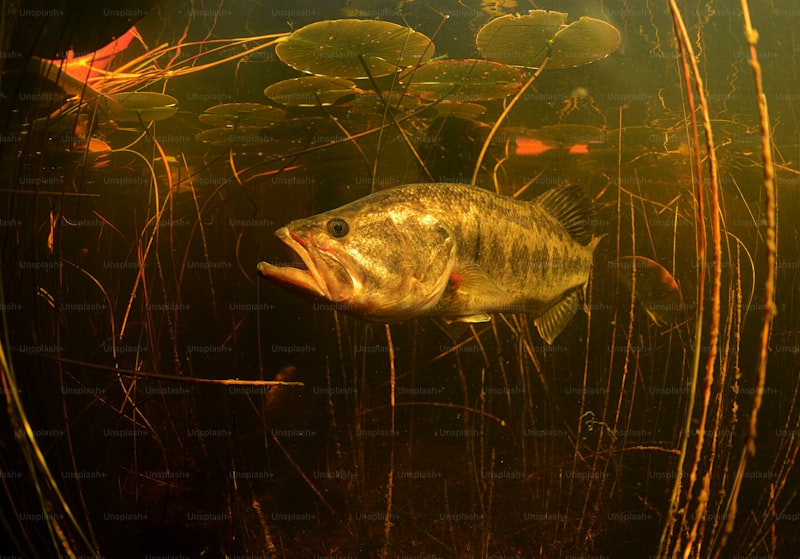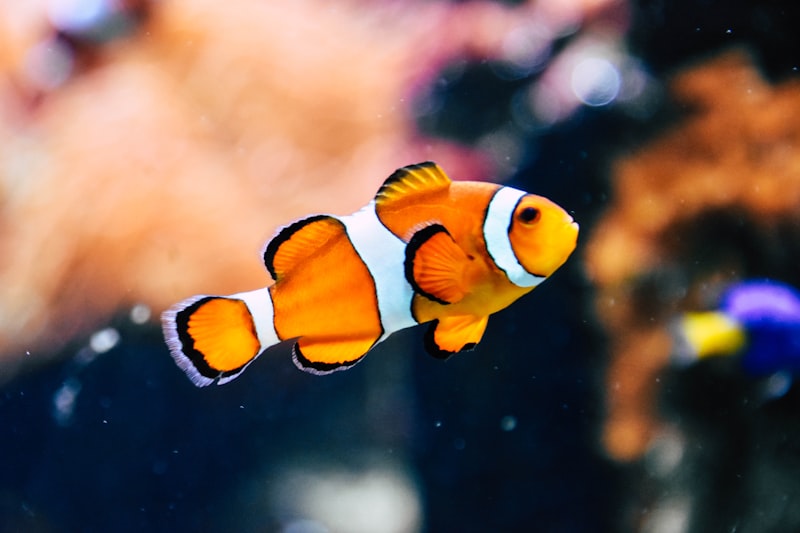Fish, those graceful inhabitants of our waters, face a silent threat every day: pollution. As our industrial activities and urbanization grow, so does the pollution in our lakes, rivers, and oceans. But how does this affect our finned friends on a physiological level?
Pollution, whether from chemicals, plastics, or heavy metals, can wreak havoc on fish physiology. Imagine swimming in a pool with murky water—you’d struggle to breathe and move freely. Similarly, fish exposed to polluted waters encounter challenges that affect their respiratory systems, making it harder for them to extract oxygen from water. This can lead to decreased growth rates and overall fitness.
Moreover, pollutants can disrupt fish hormonal balance, akin to how an unexpected power outage disrupts a busy office. Hormones regulate essential functions like growth, reproduction, and metabolism. When pollutants interfere with these processes, fish may exhibit reproductive abnormalities or impaired growth, affecting their population dynamics and ecosystem stability.
Think of a fish’s body as a finely tuned machine. Just like a car engine needs clean oil to function smoothly, fish need clean water for their organs to work optimally. Pollutants can accumulate in fish tissues over time, leading to long-term health issues and even threatening their survival.
In response to pollution, some fish species develop adaptive mechanisms. It’s like humans acclimating to a noisy cityscape—eventually, we learn to sleep through the sirens. Similarly, certain fish species may evolve tolerance to specific pollutants, though this adaptation takes generations.
Understanding these physiological responses is crucial for conservation efforts. By mitigating pollution sources and restoring degraded habitats, we can give fish a fighting chance to thrive in their natural environments. After all, a healthy aquatic ecosystem benefits not just fish but also us, ensuring clean water and sustainable fisheries for future generations.
Survival Tactics: How Fish Physiologically Adapt to Polluted Waters
Fish, resilient creatures of aquatic environments, employ fascinating physiological adaptations to survive in polluted waters. When faced with environmental challenges like water pollution, these adaptations become crucial for their survival.
One key adaptation is their ability to regulate osmotic balance. Normally, fish maintain a delicate balance of salts and water inside their bodies, but in polluted waters with fluctuating levels of contaminants, this balance can be disrupted. To counteract this, some fish species have developed specialized mechanisms to excrete excess salts or retain essential ions, ensuring their internal environment remains stable despite external changes.
Another remarkable adaptation involves detoxification processes within their bodies. Pollution often introduces harmful chemicals like heavy metals or pesticides into the water, posing a serious threat to aquatic life. Fish combat this by utilizing detoxification enzymes that break down these toxins into less harmful substances, which can then be excreted from their bodies. This evolutionary strategy helps them mitigate the harmful effects of pollution over time.
Furthermore, behavioral adaptations play a critical role in fish survival in polluted waters. Some species alter their feeding habits or migrate to less contaminated areas, reducing their exposure to pollutants. Additionally, changes in reproductive strategies, such as timing or location of spawning, allow them to safeguard their offspring from the adverse effects of polluted environments.
Unseen Impact: Pollution’s Effect on Fish Physiology Revealed

Have you ever wondered how pollution affects marine life beneath the surface? Recent studies delve into the unseen impact of pollution on fish physiology, revealing startling findings. Pollution, particularly from industrial waste and chemicals, infiltrates water bodies worldwide, subtly altering the very physiology of aquatic organisms.
Fish, as primary inhabitants of these aquatic ecosystems, bear a significant brunt of pollution’s effects. Chemical contaminants seep into the water, disrupting fish metabolism and compromising their immune systems. This interference goes beyond mere environmental disturbance; it directly impacts fish at a physiological level, altering their reproductive cycles, growth rates, and even behavior patterns.
Imagine a fish swimming through water contaminated with toxins—it’s like navigating through a murky maze where every turn exposes them to unseen dangers. These pollutants mimic natural hormones in the fish’s body, leading to skewed developmental processes and reproductive abnormalities. The delicate balance of life underwater is thus intricately disturbed by human-induced pollutants, painting a grim picture of ecological imbalance.
Moreover, pollution doesn’t just affect individual fish—it permeates entire aquatic food chains. Predators consuming contaminated prey inadvertently accumulate toxins in their own bodies, magnifying the impact throughout the ecosystem. This bioaccumulation amplifies pollution’s reach, posing threats not only to fish populations but also to human health through contaminated seafood consumption.
As awareness grows, so does the urgency to mitigate these effects. Scientists advocate for stringent environmental policies and sustainable practices to curb pollution levels in water bodies. Understanding the intricate web of interactions between pollutants and fish physiology is crucial for developing effective conservation strategies that safeguard both aquatic ecosystems and human well-being.
This article aims to inform readers about the profound yet often overlooked impact of pollution on fish physiology, using engaging language and maintaining a conversational tone throughout.
From Gills to Genes: Understanding Fish Responses to Environmental Pollutants
Have you ever wondered how fish manage to survive in our increasingly polluted waters? It’s not just about swimming away; these aquatic creatures have some remarkable adaptations that help them cope with environmental pollutants. From their gills to their genes, fish have developed intricate mechanisms over millions of years of evolution.
Let’s dive into how fish respond to environmental pollutants. Fish gills, which are akin to our lungs, play a crucial role. They are not just for breathing; they act as a frontline defense against pollutants dissolved in water. Imagine fish gills as tiny filters that selectively allow beneficial substances while blocking harmful pollutants from entering their bloodstream.
Beyond physical barriers, fish also have biochemical defenses. Enzymes in their liver break down toxins into less harmful substances. This detoxification process is crucial for fish to maintain their health in polluted environments. It’s like their own internal cleaning crew, constantly at work to neutralize pollutants before they cause harm.
Interestingly, fish responses to pollutants extend to the genetic level. Over time, fish populations exposed to pollutants can develop genetic adaptations that confer resistance or tolerance. These genetic changes are like evolutionary snapshots, showing how species evolve to survive in changing environments. It’s a testament to nature’s resilience and the adaptability of life forms under pressure.
But not all fish respond the same way to pollutants. Factors like species, age, and habitat influence their tolerance levels. Some fish species may be more sensitive, while others show remarkable resilience. Understanding these differences helps scientists gauge environmental health and predict the impacts of pollution on aquatic ecosystems.
Fish responses to environmental pollutants are a fascinating study in biology. From their intricate gills to adaptive genetic mechanisms, fish have evolved robust strategies to survive in polluted waters. By studying these mechanisms, scientists gain insights into how ecosystems respond to human activities and how we can better protect our aquatic resources for future generations.
The Silent Struggle: Inside the Cellular Response of Fish to Pollution
When pollutants like heavy metals, pesticides, or industrial waste enter aquatic environments, fish face a biochemical battle. Their cells, much like ours, have defense mechanisms. One key player is the antioxidant system. Think of it as their own little cleanup crew, scavenging harmful free radicals produced when pollutants enter their bodies. These antioxidants, such as glutathione and superoxide dismutase, work tirelessly to neutralize toxins and protect vital cellular components.
But sometimes, the influx of pollutants overwhelms their defenses. This leads to oxidative stress, a condition where the balance between free radicals and antioxidants tips in favor of the former. It’s like a tug-of-war where the pollutants are pulling harder, causing damage to fish cells. This stress not only affects individual fish but also impairs their growth, reproduction, and ability to fight diseases.
Interestingly, different fish species show varying degrees of resilience. Some have evolved stronger antioxidant defenses, allowing them to thrive in polluted waters that would be lethal to others. This adaptation highlights the incredible diversity in nature’s responses to environmental challenges.
Moreover, pollutants can disrupt fish endocrine systems, affecting hormone levels and reproductive functions. Imagine the confusion in their cellular communication when pollutants mimic or block natural hormones, throwing their biological rhythms out of sync. This disruption can have cascading effects on fish populations, potentially leading to declines that ripple through the food chain.

Understanding these cellular responses is crucial for conservation efforts. By monitoring biomarkers of oxidative stress and endocrine disruption in fish, scientists can assess environmental health and implement strategies to mitigate pollution’s impact. It’s a race against time to safeguard aquatic ecosystems and ensure fish populations can adapt and thrive in a changing world.
Beyond the Surface: How Pollution Alters Fish Internal Systems
Ever wondered how pollution affects marine life beyond what meets the eye? Fish, our underwater neighbors, face a silent but profound threat from pollution altering their internal systems. Imagine a bustling city where air pollution is high—similarly, underwater environments can become contaminated with toxins from industrial waste, oil spills, and plastic debris.
These pollutants don’t just float harmlessly; they seep into the water, infiltrating fish habitats. As fish breathe through their gills, they unwittingly absorb contaminants. These substances can disrupt their immune systems, impair reproductive health, and even alter their behavior.
The impact goes deeper than physical health. Just like pollutants cloud clear waters, they cloud the fish’s ability to thrive. Their internal organs, designed for a pristine environment, now battle unnatural substances. It’s akin to trying to breathe fresh air in a smog-filled city—difficult and damaging over time.
Think of a fish’s body as a finely tuned machine—each organ playing a crucial role in its survival. When pollutants disrupt this delicate balance, it’s like throwing wrenches into the gears. The liver, tasked with detoxifying the body, becomes overwhelmed. The reproductive system, vital for species survival, can falter under the assault of endocrine disruptors.
Rhetorically, can we afford to ignore this silent crisis? Fish, as indicators of aquatic health, signal broader environmental distress. Their struggle against pollution is our wake-up call—to reconsider our industrial practices and embrace sustainable solutions. After all, protecting their internal systems means safeguarding the oceans’ health, upon which our own well-being depends.
This article aims to engage readers by highlighting the unseen impacts of pollution on fish, using a conversational tone and engaging language to draw attention to the issue.
Stressed Out Fish: Exploring Hormonal Changes Due to Pollution
Have you ever wondered how pollution affects marine life, particularly fish? It’s more than just about water quality; pollution can lead to significant hormonal changes in fish populations, affecting their health and behavior in surprising ways.
Imagine a bustling city where the air is thick with pollutants. Similarly, in aquatic environments, pollutants like heavy metals, pesticides, and pharmaceuticals can infiltrate water sources. These contaminants disrupt the delicate hormonal balance of fish, much like how stress hormones can affect humans under pressure.
When fish are exposed to pollutants, their endocrine systems can go haywire. These chemicals mimic natural hormones or interfere with hormone production, leading to imbalances that impact growth, reproduction, and even survival. It’s akin to a disrupted orchestra where the harmony is lost, and the music suffers.
For instance, studies have shown that exposure to estrogen-mimicking chemicals can cause male fish to develop female characteristics. This phenomenon, known as intersex, raises concerns about the long-term viability of fish populations in polluted waters.
Moreover, hormonal changes can influence fish behavior. They may become more aggressive or exhibit altered feeding patterns, affecting their ability to thrive in their natural habitats. It’s like trying to navigate through a maze with distorted directions – challenging and disorienting.
Researchers are continuously studying these effects to understand the broader implications for ecosystems and human health. After all, what affects the fish eventually ripples through the entire food chain, potentially impacting seafood safety and biodiversity.
Frequently Asked Questions
What are the common physiological responses of fish to pollution?
Learn about the typical physiological responses of fish to pollution, including reduced growth rates, impaired reproduction, altered behavior, and increased susceptibility to diseases. Understand how environmental contaminants affect fish health and ecosystem stability.
What are the implications of pollution-induced immune suppression in fish?
Learn about the implications of pollution-induced immune suppression in fish, including how pollutants can weaken their immune systems, making them more susceptible to diseases and affecting overall ecosystem health.
How do fish respond to oxidative stress caused by pollution?
Learn how fish respond to oxidative stress caused by pollution, including the mechanisms they employ to combat oxidative damage and adapt to polluted environments.
What are the effects of pollution on fish metabolism and energy balance?
Discover how pollution affects fish metabolism and energy balance. Learn about the significant impacts of pollutants on fish physiology, including altered metabolic rates and disrupted energy allocation. Explore how environmental contaminants can lead to metabolic stress, affecting fish health and ecosystem dynamics.
How does pollution impact the respiratory systems of fish?
This FAQ explains how pollution affects the respiratory systems of fish, detailing the detrimental effects of pollutants like heavy metals and chemicals on gills and breathing mechanisms. It covers reduced oxygen uptake, tissue damage, and increased susceptibility to diseases, highlighting the broader implications of aquatic pollution on fish health.


